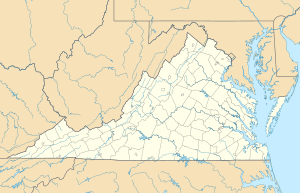United States lightship Portsmouth (LV-101) facts for kids
 |
|
Quick facts for kids History |
|
|---|---|
| Name |
|
| Builder | Pusey & Jones |
| Laid down | 1915 |
| Launched | 12 January 1916 |
| Acquired | 2 September 1916 |
| Decommissioned | 23 March 1964 |
| In service | 1916 |
| Out of service | 1963 |
| Identification |
|
| Status | Museum ship |
| General characteristics | |
| Type | Lightship |
| Displacement | 360 long tons (366 t) |
| Length | 101 ft 10 in (31.04 m) |
| Beam | 25 ft (7.6 m) |
| Draft | 11 ft 4 in (3.45 m) |
| Propulsion | Meitz & Weiss 4-cylinder kerosene engine, 200 hp (149 kW) 1944: Cooper-Bessemer 315HP Six Cylinder Diesel |
| Speed | 8 knots (15 km/h; 9.2 mph) (4 Cylinder) 8.2 knots (15.2 km/h; 9.4 mph) (6 Cylinder) |
| Armament | None |
|
Lightship No. 101, Portsmouth
|
|
| Location | Portsmouth, Virginia |
| Built | 1916 |
| Architect | Pusey & Jones Lightship; US Lighthouse Establishment |
| NRHP reference No. | 89001080 |
| Significant dates | |
| Added to NRHP | 5 May 1989 |
| Designated NHL | 5 May 1989 |
Imagine a floating lighthouse! That's what United States Lightship 101 was. Today, this special ship is known as the Portsmouth (or LV-101). It's now a museum ship you can visit in Portsmouth, Virginia. Even though it was never actually stationed in Portsmouth during its working life, it got its new name when it became a museum there. This historic ship is a National Historic Landmark, which means it's a very important part of American history. It's one of only a few lightships left in the world!
Contents
History of Lightship Portsmouth
Building and Early Service
The lightship Portsmouth (LV-101) was built in 1915. The company that built her was Pusey & Jones. She began her service in 1916.
Her first job was in the Chesapeake Bay. She was stationed near Cape Charles, Virginia. There, she was known as Charles. She stayed at this station until 1924.
Moving to New Stations
After her time as Charles, the ship spent about a year helping out. She was a "relief ship" for other lightships. This meant she filled in when other ships needed repairs.
From 1926 to 1951, she was stationed in Delaware. She was known as Overfalls during this time.
Changes and World War II
In 1939, a big change happened. The United States Lighthouse Service joined the United States Coast Guard. Because of this, Lightship 101 got a new number: WAL-524.
Even with the new number, she still kept the station name on her hull. During World War II, many lightships were armed. However, the Portsmouth was not.
Later Years and Retirement
In 1951, LV-101/WAL 524 moved again. She went to Stonehorse Shoal, Massachusetts. She worked there until 1963. That's when she was decommissioned, meaning she was taken out of service.
After being decommissioned, the lightship waited in the harbor at Portland, Maine. People had to decide what would happen to her next.
Becoming a Museum Ship
On September 3, 1964, a new chapter began. The City of Portsmouth, Virginia, received LV-101 as a gift. The plan was for her to become part of the Portsmouth Naval Shipyard Museum.
The Portsmouth was then moved to the London Pier in Portsmouth. Even though she never worked as a lightship there, she took on the city's name. In 1989, the Portsmouth was named a National Historic Landmark. Today, you can visit this amazing ship and learn about its history!
Lightship Station Assignments
Lightships are given numbers, but the places they work are called "stations" and have names. Light Vessel 101 worked at several different stations during its long career:
- Charles, at Cape Charles, Virginia (from 1916 to 1924)
- Relief, serving as a relief ship in the 5th District (from 1925 to 1926)
- Overfalls, at Overfalls, Delaware (from 1926 to 1951)
- Stonehorse, at Stonehorse Shoal, Massachusetts (from 1951 to 1963)
- CrossRip, at Cross Rip Shoal, Massachusetts (from 1963 to 1964)
Other Lightships in Chesapeake Bay
See also


